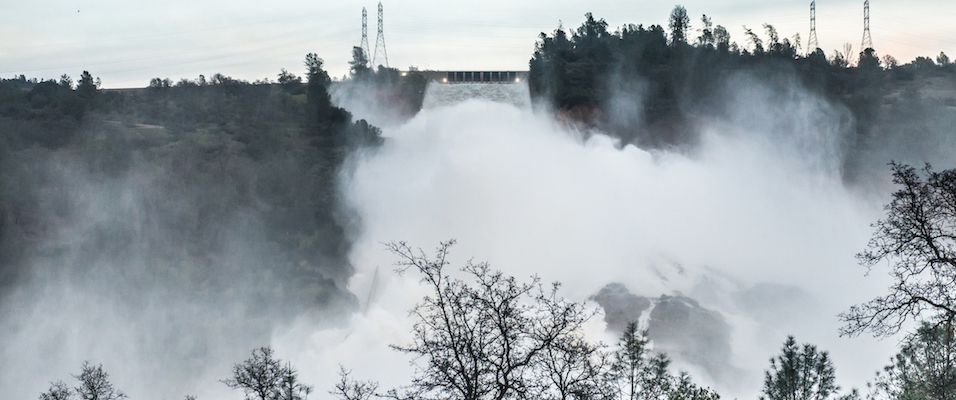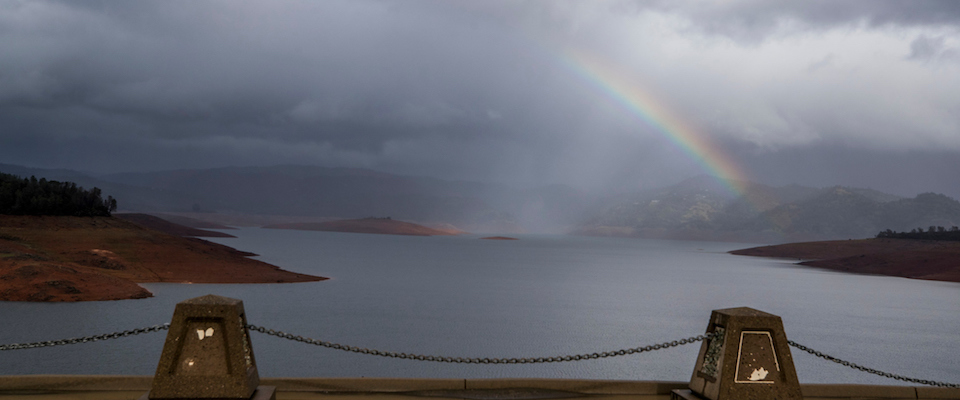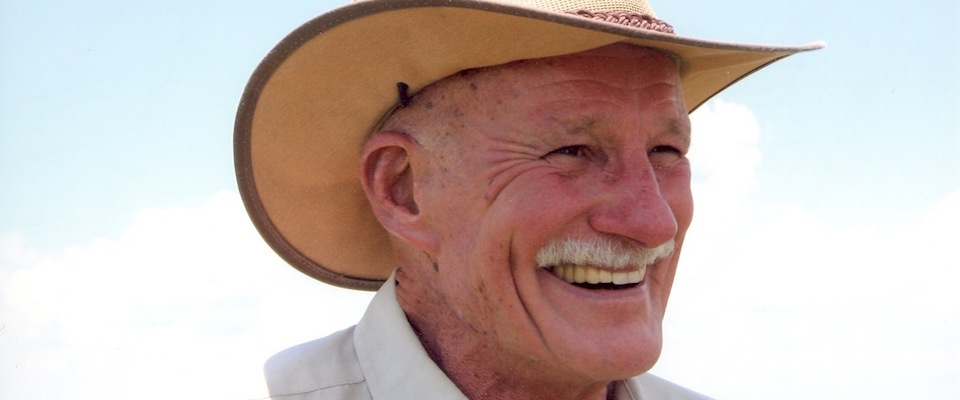The news from Oroville Dam on Tuesday is nominally better. Water isn’t flowing over the top of wall at the auxiliary spillway, and erosion has stopped. Water releases are ahead of inflows, and the reservoir’s level is falling. Perhaps most encouraging for the close to 200,000 displaced locals downstream of the dam, the evacuation alert has been downgraded.
But the situation on the Feather River is by no means stable. According to UC Berkeley’s Robert Bea, professor emeritus of civil engineering and co-founder of UC Berkeley’s Center for Catastrophic Risk Management, the state may be teetering on the cusp of utter disaster, one major storm away from an infrastructure failure that could send a wall of water down the Sacramento Valley, wiping out small towns and farmland, inundating parts* of the city of Sacramento, and flooding the Sacramento-San Joaquin Delta, flattening its levees and knocking out the gigantic state and federal pumps that supply much of Southern California with water.
Bea is one of the world’s top authorities on disasters of this scale, a lead investigator in many of the nation’s worst disasters over the past couple of decades, from the destruction of the space shuttles Challenger and Columbia to Hurricane Katrina to the Deepwater Horizon explosion. He has compiled a meticulously detailed database on more than 600 engineering failures (many of them stunningly catastrophic), and helped develop an interactive system that allows managers to assess and respond to risk in real time.
And Oroville, says Bea, is potentially another Katrina. Or worse. Moreover, the response to date hasn’t really been effective, not because the responders are incompetent, but because options are limited.

“You have a full breach on the primary spillway, and a large hole in the auxiliary spillway that’s eating toward the wingwall,” Bea says. “Good people are doing what they can, but it’s hardly an adequate remedy. They’re dropping big bags of rocks in the holes, but it’s like the little Dutch boy sticking his finger in the dike.”
Though the California Department of Water Resources (DWR), which did not return calls for comment, is now releasing more water than is coming into the reservoir and the level is falling, that could all change with the next round of storms.
“They may not have a choice but to put more water [down the auxiliary spillway], and if that happens the erosion will resume and they could lose the whole shebang,” Bea says.
Oroville Dam, he says, has systemic flaws that make it inherently unsafe, flaws that are now increasingly manifest as the structure is subjected to cascading stresses. The dam’s problems are not new to either Bea or his counterparts at DWR.
“There were persistent signs of the problem as far back as 2008, and when I saw inspection reports in 2015, I got a strong sense of déjà vu. I saw forces in play that were similar to what we saw with Katrina.”
Disasters like Katrina and Oroville, says Bea, are engendered in large part by the prevailing culture in American engineering. Unlike European engineers, he says, American engineers think in terms of inevitable success, not possible failure.
“They don’t design adequately for what can go wrong,” he says. “That’s how you end up with an auxiliary spillway that isn’t even armored, that’s just easily eroded earth and rocks. That’s a unique American approach to engineering. If they had the same attitude in the Netherlands, for example, they’d all be swimming by now. Europe can’t afford system failures.”
“In many cases, you have public servants sitting on deteriorating systems, and they don’t even recognize the dangers.”
Furthermore, American engineers tend to focus on the “components” that constitute their specialties, says Bea. But when they put all their components together in a megaproject, not enough attention is paid to the stresses the system as a whole may endure under a wide variety of conditions. Steel beams and concrete compounds may test out admirably in the lab, but when they’re conjoined in a dam or bridge or building exposed to weather for years and years, things may not turn out like the numbers originally indicated.
“System geriatrics aren’t well understood here,” says Bea, “and that leads to trouble, as we see time and again. In many cases, you have public servants sitting on deteriorating systems, and they don’t even recognize the dangers.”
Finally, neither politicians nor engineers get particularly excited about maintaining existing infrastructure, he claims.
“They want to build new, shiny things, like a self-supported suspension span from San Francisco to the East Bay,” Bea says. “They aren’t enthused about fixing old stuff. Nobody gets promoted for filling potholes. I call what we’re seeing at Oroville ‘The Revenge of Deferred Maintenance.’”
As noted, Oroville’s failure would generate catastrophic downstream effects all the way to the Delta, which has major problems of its own, says Bea.
“I had several student-faculty teams looking at Delta sustainability,” he says. “We examined the entire infrastructure: levees, roads, farmlands, pumps. The conclusion was that it’s basically time to get out of Dodge, and not just because of Oroville. You could have catastrophic and terminal flooding from the San Joaquin River, for example, or a failure of Folsom Dam on the American, which is also pretty much a patch job. Or you could have a major earthquake. It just isn’t a sustainable system.”
For now, Oroville Dam and much of California hang in a parlous balance, and a potential tipping point is approaching: A series of storms are poised to hit California in the next week, with expectations of four to six inches of rain falling on Feather River watersheds.
*This story has been amended from its original version, which stated that “much of the city of Sacramento” would be inundated in the event of spillway failure at Oroville. While flooding in some parts of Sacramento seems likely officials are assuring residents that the Yolo Bypass system will protect the city.





















